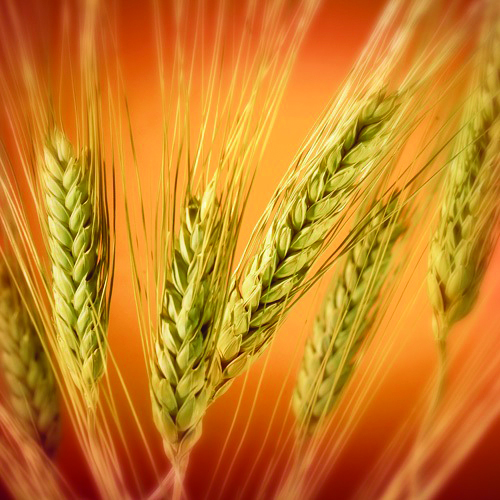Using pseudocereals to replace wheat in bakery products

Dr Charles Speirs, Bakery Science Manager, Campden BRI:
Wheat, which is widely used in the production of baked goods, is not a universally grown crop. Therefore bakery product development may be limited in parts of the world, such as sub-Saharan Africa, where wheat is not as widely available. Instead an alternative, locally sourced ingredient may be a more practical option to replace or reduce the wheat flour in products, thereby reducing dependence on imported wheat.
This is especially relevant in relation to a recent study[i] which evaluated the global food per capita supply between 1961 and 2009 to find that it has increased. However, despite this increase, the food supply has become more similar amongst countries leading to an increased reliance on a smaller, narrower range of resources. This in turn has led to a decline in nutritional diversity as major cereals such as wheat, rice and maize retain their dominance whilst minor cereals like millets, sorghum and rye showed the least spread over the fifty year period. According to the research, ‘making available and accessible adequate nutritional diversity within and in supplement to the major crops comprising an ever-greater proportion of global food supplies is critical’. It is necessary, therefore, to decrease homogeneity whilst at the same time attempting to produce ‘yields of major crops to keep pace with demand, the future success of which has been questioned.’
In light of this rapid rise in demand for wheat, Campden BRI has been working with pseudocereals such as quinoa and buckwheat, and lesser known cereals such as sorghum and millet, blended with wheat and used as a replacement for wheat flour in bakery products. If successful, this will provide a way to extend wheat flour and also a route to increase the use of local grains in baked goods in tropical and sub-tropical climates, thereby increasing heterogeneity in local and global food supplies. However, the problem with substitution of wheat flour is the possible dilution of functional properties, giving an end product which is of poor quality because of insufficient gluten development.
Scientists at Campden BRI engaged in three areas of research to test the substitution of wheat flour in bakery products. Firstly, they evaluated the impact of “brews” developed from pseudocereals and cereals other than wheat on bread quality, in which brews were prepared from a 50:50 mixture of the flour with water to which yeast was added. The mixture was allowed to stand at 15°C for 16-18 hours to develop the brew. Different amounts of the ferment were then added to wheat flour to produce dough. The quality of dough prepared with the inclusion of different brews at different levels was assessed by the baker, and dough adjudged as good quality was progressed for baking assessment.
Secondly, the impact of gluten addition to composite flours containing wheat and other cereals on leavened bread quality was evaluated. Composite flours were prepared by blending 25 parts of either millet, rice or sorghum flour with 75 parts of bread making wheat flour. Dried wheat gluten (2%) was added to the composite flour. Bread rolls were produced using this blend and following the standard Campden BRI no-time dough process.
Thirdly, the use of composite flours containing wheat and other cereals directly in short dough biscuits, scones and low ratio cakes – products which have a lesser need for the functional properties of gluten – was evaluated. Composite flours were prepared by blending 25 parts of either millet or rice with 75 parts of cake or biscuit heat treated flour. Short dough biscuits, scones and low ratio cakes were produced using this blend and following standard Campden BRI recipes.
All three areas of research yielded positive results. With the first approach, it was found that the inclusion of rice, sorghum and millet brews in wheat flour dough makes good quality leavened bread – millet brews in particular. When the addition of gluten was tested in the second approach, 25% of wheat in a composite flour formulation could be replaced to give bread rolls of a good volume and crumb structure together with a good eating texture. With the third approach, composite flour blends containing 75% wheat flour and 25% of either millet or rice flour produced short dough biscuits, scones or low ratio cakes of good appearance and eating quality.
This is very good news for bakers operating in regions where wheat is scarce or otherwise hard to come by. Through the replacement of wheat flour with brews produced from other grains, such as sorghum, rice and millet, or the addition of wheat gluten to composite flours, there is massive potential to increase the variety of bread types available and increase the use of grains not widely used in conventional bread-making. It will also almost certainly reduce the dependency on wheat flour and increase the use of less common grains in countries where wheat is not in abundance, reducing the trend of homogeneity amongst crops. The diversity provided by pseudocereals may be what is needed to counter the threat to food security posed by such homogeneity.
I am keen to hear from any organisation that might want to investigate the potential further. There has been much work done in West Africa into the use of cassava as a partial substitute for wheat flour, following a similar strategy to our work. Indeed it is required is some countries to supplement wheat flour with cassava. Our studies suggest that sorghum and millet-based brews might offer better potential as a product, and we are keen to do further trials to see if we can substantiate our findings. We would be very happy for anyone who is looking to reduce their dependence on wheat flour to contact us*.
[i] Khoury, C 2013. ‘Increasing homogeneity in global food supplies and the implications for food security’, PNAS January 2014
< www.pnas.org/cgi/doi/10.1073/pnas.1313490111>
*charles.speirs@campdenbri.co.uk +44(0)1386 842284



